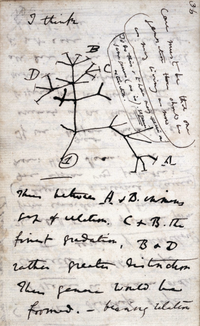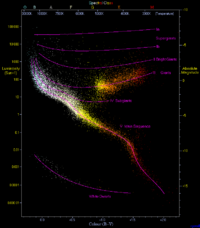
Rapid sequence evolution is associated with genetic incompatibilities in the plastid Clp complex
Sign Up to like & getrecommendations! Published in 2022 at "Plant Molecular Biology"
DOI: 10.1007/s11103-022-01241-4
Abstract: Key message Replacing the native clpP1 gene in the Nicotiana plastid genome with homologs from different donor species showed that the extent of genetic incompatibilities depended on the rate of sequence evolution. Abstract The plastid… read more here.
Keywords: genetic incompatibilities; clp complex; sequence evolution; sequence ... See more keywords

Sequence Co-evolution and Structure Stabilization Modulate Olfactory Receptor Expression.
Sign Up to like & getrecommendations! Published in 2022 at "Biophysical journal"
DOI: 10.1016/j.bpj.2022.01.015
Abstract: Olfactory receptors (ORs) belong to class A G-protein coupled receptors (GPCRs) and are activated by a variety of odorants. Till to date, there is no three-dimensional structure of an OR available. One of the major… read more here.
Keywords: expression; sequence evolution; evolution structure;

EvoLSTM: context-dependent models of sequence evolution using a sequence-to-sequence LSTM
Sign Up to like & getrecommendations! Published in 2020 at "Bioinformatics"
DOI: 10.1093/bioinformatics/btaa447
Abstract: Abstract Motivation Accurate probabilistic models of sequence evolution are essential for a wide variety of bioinformatics tasks, including sequence alignment and phylogenetic inference. The ability to realistically simulate sequence evolution is also at the core… read more here.
Keywords: sequence sequence; evolution; context dependencies; sequence evolution ... See more keywords

Detecting de novo mitochondrial mutations in angiosperms with highly divergent evolutionary rates.
Sign Up to like & getrecommendations! Published in 2021 at "Genetics"
DOI: 10.1093/genetics/iyab039
Abstract: Although plant mitochondrial genomes typically show low rates of sequence evolution, levels of divergence in certain angiosperm lineages suggest anomalously high mitochondrial mutation rates. However, de novo mutations have never been directly analyzed in such… read more here.
Keywords: mitochondrial mutation; variant frequencies; mitochondrial mutations; sequence evolution ... See more keywords

Arginine limitation drives a directed codon-dependent DNA sequence evolution response in colorectal cancer cells
Sign Up to like & getrecommendations! Published in 2023 at "Science Advances"
DOI: 10.1126/sciadv.ade9120
Abstract: Utilization of specific codons varies between organisms. Cancer represents a model for understanding DNA sequence evolution and could reveal causal factors underlying codon evolution. We found that across human cancer, arginine codons are frequently mutated… read more here.
Keywords: sequence evolution; dna sequence; arginine limitation; cancer ... See more keywords

phastSim: Efficient simulation of sequence evolution for pandemic-scale datasets
Sign Up to like & getrecommendations! Published in 2022 at "PLoS Computational Biology"
DOI: 10.1371/journal.pcbi.1010056
Abstract: Sequence simulators are fundamental tools in bioinformatics, as they allow us to test data processing and inference tools, and are an essential component of some inference methods. The ongoing surge in available sequence data is… read more here.
Keywords: sequence; sequence evolution; efficient simulation; phastsim efficient ... See more keywords

Does IR-loss promote plastome structural variation and sequence evolution?
Sign Up to like & getrecommendations! Published in 2022 at "Frontiers in Plant Science"
DOI: 10.3389/fpls.2022.888049
Abstract: Plastids are one of the main distinguishing characteristics of the plant cell. The plastid genome (plastome) of most autotrophic seed plants possesses a highly conserved quadripartite structure containing a large single-copy (LSC) and a small… read more here.
Keywords: loss; sequence; sequence evolution; structural variation ... See more keywords